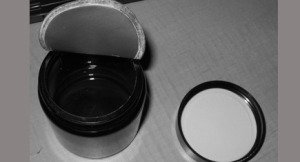This discussion below is an excerpt of a client discussion we have prior to supplying equipment.
We don’t have to do this; we could be like the ebay or Alibaba or “one stop every machine under the sun supplier” but we are not as we like to think of ourselves as a supplier invited to be a part of your team going forward.
The discussion:
“Hi Team,
I can see there is significant concern over the advice you are receiving about the cap lining material.
The cap lining material specification you sent is the correct “type” of lining material in that it has the correct sealing layer.
We can test seal all the Jars and produce excellent sealing; the sample size is only a dozen or so – this could lead you into a false sense of security if we did not forewarn you the combination of material should have softness in it.
Our knowledge on the matter is significant; beyond most suppliers of induction equipment as we have significant experience in supplying cap lining material to cap manufacturers and even the high ticket equipment that inserts the cap lining material for the cap manufacturers. See our website: https://www.capliningmaterial.com/
I have personally been involved in the selection of induction sealing materials for projects by multibillion dollar companies including Nestle and I have dealt personally with the world’s top 5 cap lining material manufacturers.
The advice below stands:
Hand Torque is part of the equation. Though a poorly applied cap ; even when it has soft lining material or a foam backing can result in unsealed products.
The part I am focussing on is cap and bottle tolerances. I am not sure the cap manufacturer will give a cap tolerance for the flatness of their caps to within +/- 0.2mm.
Similarly the bottle/jar manufacturer may not give a height/flatness tolerance to within +/- 0.2mm with respect to the plain of the top lip of the container. From quality manufacturers, most of the caps/jars may fall within this tolerance though there will be a statistical amount that are outside of this; when tolerances add you can get a case where a 0.25mm thick hard liner will not have enough give to make up for the mismatch of the top plane of the jar neck with the underside plane of the cap. In this case there will be sections of the liner that are not in contact with the jar during the sealing process.
Standard practice is to have some softness behind the liners or very tight control on the capping process and the allowable tolerances on the caps and bottles provided.
For your operations – especially as you are growing it is highly recommended you have either:
a) Softness in one of the layers of the induction lining material
Or
b) A separate foam liner behind the induction liner
Note: for higher volume hand operations we recommend a cap tightener due to the inevitable human error factor
“The purchasing decision to focus on here is the caps and the lining material.
- If I was an owner in your business I would suggest the following path.
If time is against you – for your initial launch etc- ; go with what you have and perform a 100% test on what you seal before you send it out. If we are talking about only hundreds of units at a time it is a cumbersome, but, worthwhile task.
First impressions are everything at that stage and a leaking jar of product can be a “game over” at this stage.
Here’s a video of a suggested test that can help you be confident you have a sealed Jar:
2. Going down the track insure you have some softness in your cap/liner combination.”
If your cap supplier can’t do it (maybe because your volumes are too small) you should purchase the caps without liners and source liners from a liner supplier for separate insertion prior to sealing; you will need to source about 10,000 at about 12 cents each (my guess) – We can put you in touch with the supplier to the liners for the SealerOn gallery I showed you for the Nuts.
We want you to move forward with a sound understanding of how you can reduce the statistical probability of sending out products that could leak.






